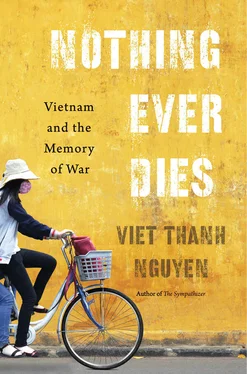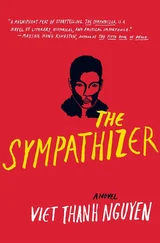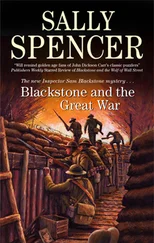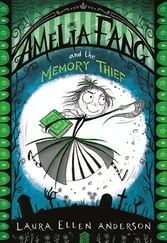But the profits come with a price, not the least of which is racial inferiority. The American subjugation of the Vietnamese reminds the Koreans of their own past treatment by Americans, one reason why Koreans are both drawn to and repulsed by the Vietnamese. 14As an American soldier tells Yong Kyu, an enlisted man at the center of the novel, the Vietnamese are Gooks. “They’re really filthy. But you’re like us. We’re the allies.” 15When Yong Kyu recalls how Americans first used “Gook” in Korea, he understands that “it is the Vietnamese that I am like.” 16A fellow Korean even says, “You look fine, black as any Vietnamese.” 17Perhaps the novel is referring to the popular 1969 Korean song “Sergeant Kim’s Return from Vietnam,” where the eponymous hero comes back as “black-faced Sergeant Kim.” He was the most memorable character from the Korean effort to promote Korean soldiers in Vietnam as heroic and virtuous, but his blackness is an ambiguous sign. He has been exposed not only to tropical sun, but also to violent war and contamination by the anti-Asian racism of Americans. 18In the case of the My Lai massacre, which the novel recounts in detail, “it is racism, in the end, that makes a person insist that a massacre is justified.” 19The Koreans in the novel do not commit atrocities against the Vietnamese, but Hwang implies they are one step away from doing so, complicit as they are with a racist American military.
What the Koreans definitely do is prostitute themselves, literally or through the black market. While the Vietnamese characters die or are imprisoned, Yong Kyu is alive and free at novel’s end, helping the prostitute Hae Jong ship a considerable quantity of illicit goods to her family in Korea, as many Korean soldiers also did. 20With only minor regret, Yong Kyu obeys the hierarchy that men exploit women, whites subjugate Asians, and Koreans mistreat Vietnamese. “Black” becomes the sign of corruption and inferiority, from the black market to black or blackened people. 21Blackness is also important to the other major Korean novel about this Korean war, Ahn Junghyo’s White War , which the author translated himself into English as White Badge . 22But while blackness lurks in the novel, whiteness is the prevalent concern. The narrator, Han Kiju, is an intellectual, unlike Yong Kyu and most of the Korean men who volunteered for Vietnam. He is enthralled with Western, white culture, having read Homer, Remarque, Shakespeare, Hemingway, Montaigne, Dryden, and Coleridge. Befitting an intellectual, he is a man whose masculinity is questioned by himself and others. After the war, he is an “alien” in Korean society, his literary knowledge useless, his career stalled, his adulterous wife having left him because of their inability to reproduce, eventually revealed as a failure of his virility. 23A phone call from a veteran comrade, Pyon Chinsu, forces him to remember the war and to realize the cause of his malaise: the “blood money” paid to soldiers who went to Vietnam. 24Privates who volunteered for Vietnam earned $40 a month when the average family’s annual income was $98. The United States paid about $1 billion for these Korean soldiers, or around $6.6 billion today. 25This money “fueled the modernization and development of the country. And owing to this contribution, the Republic of Korea, or at least a higher echelon of it, made a gigantic stride into the world market. Lives for sale. National mercenaries.” 26
In both these novels, the Koreans sell themselves to the United States, a “swaggering idol, a boastful giant.” 27To Han Kiju’s observant eyes, if Americans are giants, then Koreans are dwarves, wearing American uniforms, eating American food, and using American weapons too large for them. 28The ironies of being a colonized colonizer abound in this white war, certainly for the narrator, who depicts the sole black American in the book as “a Negro soldier with thick, primitive, pinkish lips.” 29Like Americans, some Koreans absorb American racism, calling the Vietnamese “gooks” and a “yellow-skinned, dwarfish race.” 30Like Americans, Korean soldiers cannot tell the difference between friendly Vietnamese and enemy Vietnamese. They pursue the American strategy of punishment and patronization, forcibly removing villagers from their homes to strategic hamlets while also trying to win hearts and minds by building clinics, throwing parties, and distributing rice. But what Koreans do to the Vietnamese is what others did to Koreans: “what did we, or our parents, think when the UN forces, the Americans and the Turks swarmed into our village during the Korean War to liberate us from the Communists and then raped the village women at night.” 31As if to avoid committing the same atrocity, Kiju takes a Vietnamese mistress, a virtuous but compromised woman named Hai. Figures like Hai are staples of foreign literature about Vietnam, the most famous being Phuong in Graham Greene’s The Quiet American . With Hai, Kiju can be a man, but the illusion of this masculinity is revealed when she begs him to take her to Korea, which he cannot do. 32Perhaps he simply will not. As the novel later shows, there are Vietnamese refugees living in poverty in postwar Seoul, including women abandoned by Korean lovers. 33This history continues today, as poor Vietnamese women come to Korea to be matched with Korean men whom no one else will marry, oftentimes farmers left behind by the modernization and urbanization of their country.
The real drama of White Badge is not between Koreans and Vietnamese, but between Koreans. Han Kiju’s former comrade, Pyon Chinsu, has contacted him in order to ask a final favor — shoot him and put him out of his postwar misery, which occurs against the backdrop of democratic struggles opposed to the military dictatorship of Chun Doo Hwan. The novel closes with the meeting between Pyon Chinsu, peasant, and Han Kiju, intellectual, without letting us know whether Kiju can pull the trigger. Either way is defeat for soldiers who are neither rewarded nor recognized by their fellow citizens, especially the businessmen that benefited most from the war. Unlike the War Memorial of Korea, White Badge shows the costs and myths of martial manhood. Whether this manhood succeeds or fails is due in both cases to its submission to the American giant “who had never learned how to live outside his own world” and who has demanded that Koreans live in his, via his capitalism, his literature, and his (white) war. 34In return, this giant offers Koreans the opportunity to exploit what historian Bruce Cumings calls “El Dorado,” or Vietnam, where Korean engineers from Daewoo rented rooms from my parents in our amiable provincial town. 35
The disgust with both Americans and Koreans is profound in these antiheroic novels, but there exists a heroic trend in Korean memory about this war found in songs such as “Sergeant Kim’s Return from Vietnam.” This heroic version of Korean war memory does not circulate outside of Korea, however. Instead, audiences outside Korea are most likely to know these antiheroic novels and the movie adaptation of White Badge . In this way, the Korean case is similar to the American one. Perhaps the global image of the war was so negative that heroic stories did not match the expectations of global audiences. White Badge ’s 1994 movie adaptation (also called White War in Korea) is still perhaps the best-known Korean film about the war, and retains the novel’s antiheroic, anti-American qualities. 36At the same time, the movie signals how Korean memories of the war increasingly emphasized the way that Koreans experienced the war. While the novel is remarkable in the war’s global literature for its Vietnamese perspectives, the movie eliminates most of them. Han Kiju’s mistress vanishes and the Viet Cong woman whom the soldiers sexually humiliate becomes a suicide bomber. Without sympathetic Vietnamese women, the movie, even more than the novel, becomes a drama about and between Korean men. Their struggle is not so much about their own moral ambiguity in Vietnam but about their postwar relationship to a Korean society poised between dictatorship and democracy in the 1980s.
Читать дальше












